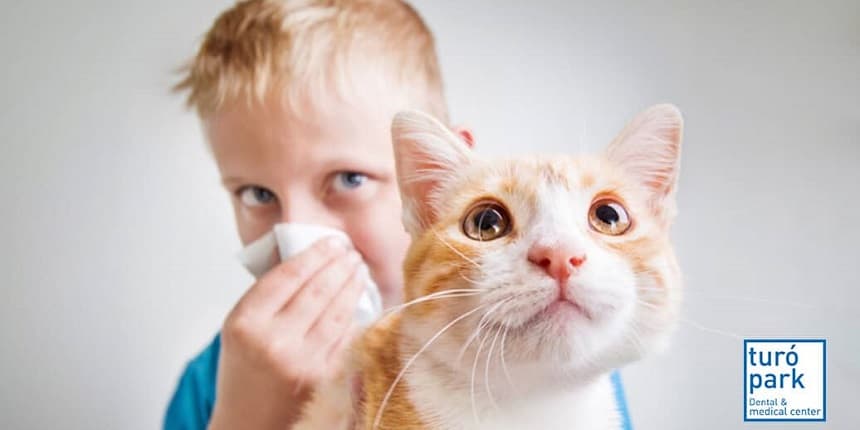
Cat Allergies
People with Cat Allergies react to specific substances that cats produce, such as saliva, skin flakes called dander, or urine.
The substances that cause these reactions are called allergens. A cat allergy can cause symptoms ranging from mild respiratory problems to a life-threatening syndrome called anaphylaxis.
Cat allergies are among the most common allergies. According to one study, about 12 percent of Americans are allergic to cats, but in Europe, it is much higher at around 26 percent.
Why do people get cat allergies?
Allergies are usually caused by substances attached to cat hair, rather than the hair itself.
Allergies develop when the immune system overreacts to a usually harmless substance.
This causes a person’s immune system to react to that substance as if it were a virus, bacteria, or another invader. Most people react to substances found in a cat’s sweat, saliva, and anal glands.
Some people who have adverse reactions to cats think that they are allergic to cat hair. It is not hair that causes the reaction though.
Instead, the problem is other substances, such as cat dander, cat urine, cat saliva, and other substances that may attach to a cat’s hair. These substances contain some proteins that can cause allergic reactions.
Symptoms
The symptoms of cat allergies vary depending on the protein someone is allergic to and their exposure to that protein. For example, tiny allergens from cats can land in a person’s nose or eyes, causing burning or itching.
The most common symptoms of a cat allergy include:
- an asthma attack in people who have asthma
- respiratory symptoms such as coughing, sneezing, or a stuffy nose
- irritated or red eyes
- itchy skin
- a rash on areas of the body that have come into contact with cat allergens
Very rarely, people with a cat allergy can develop a severe allergic reaction called anaphylaxis. Anaphylaxis makes it difficult to breathe, can lower blood pressure to dangerous levels, and can send the body into shock.
A person who has trouble breathing or feels like they are choking following contact with a cat should seek immediate emergency care. Anaphylaxis is a life-threatening reaction.
A person who is allergic to cats may continue to have symptoms even after the cat is no longer present. That happens because cat dander and other cat allergens can land on furniture and rugs, remain on unwashed clothes, and linger in linens.
Prevention and management
Carpets and rugs may trap cat allergens, so they are not recommended.
People with allergies who want to live with cats or visit homes that have cats can do several things to manage their symptoms. Trying these can help alleviate the severity of allergies.
These include:
- Talk to a doctor about allergy treatments: Inhalers can reduce the risk of an asthma attack. Some nasal sprays can also help. Some people find that antihistamines reduce symptoms.
- Consider allergy shots: Allergy shots, sometimes called immunotherapy, gradually desensitize the immune system to particular allergens. By exposing the body to very small amounts of allergens over time, these shots can reduce the severity of allergic reactions.
- Do not use carpets or rugs, since they can trap pet allergens: Low pile carpet may reduce symptoms in houses that must use carpeting.
- Keep pets out of specific areas: These include bedrooms, off of furniture, and out of bed.
- Grooming: Have the cat regularly groomed, and ask someone who does not have allergies to brush them.
- Use air conditioning to filter the air: HEPA air cleaners can help with removing allergens.
- Vacuum: Use a microfilter bag in the vacuum to prevent cat allergens from traveling back into the air.
- Avoid hugging or kissing cats: Wash hands after petting them.
Regularly vacuum furniture and carpets and sweep the floors: If possible, have someone who does not have pet allergies do these chores. - Carry an epinephrine injection pen: For those who have more severe reactions to cats, talk to your doctor about whether an epinephrine pen is an option. This can be used to treat severe allergic reactions should someone come into unplanned contact with an allergen.
No specific treatment or preventative strategy can guarantee a person will not develop cat allergies.
Leave a Comment
(0 Comments)